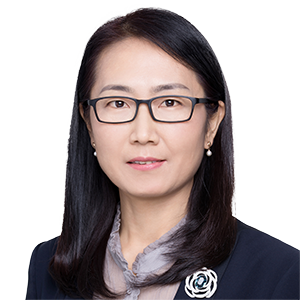On 8 September 2024, the Ministry of Commerce (MOFCOM), the National Health Commission (NHC) and the National Medical Products Administration jointly released the Notice on Carrying Out Pilot Programs to Expand the Opening-up in the Healthcare Sector (关于在医疗领域开展扩大开放试点工作的通知) (the Notice)1.
The Notice, as part of China’s efforts to provide a more open environment for foreign investors, aims to relax the restrictions for foreign investors’ investments in China’s life sciences and healthcare sectors, namely, (i) the development and application of human stem cells, gene diagnostic and therapy technologies for product registration and manufacturing (CGT), and (ii) the establishment and operation of wholly foreign-owned hospitals (Medical Institutions). The Notice came into effect on 7 September 2024.
This article summarizes the main content of the Notice and sets out relevant historical legal developments in these two healthcare areas.
CGT
According to the Notice:
- foreign-invested entities in the Pilot Free Trade Zones in Beijing, Shanghai and Guangdong, as well as the Hainan Free Trade Port (collectively, the CGT Pilot Regions), are allowed to carry out CGT business;
- the relevant products developed by foreign-invested entities in the CGT Pilot Regions which have been duly approved for registration or manufacturing can be used nationwide in China; and
- foreign-invested entities intending to undertake such business under a pilot program must comply with relevant laws and regulations in China, including amongst others, administrative rules and measures on human genetic resources, drug clinical trials, drug registration and manufacturing, and ethical review, etc.
Foreign investment in CGT businesses have been prohibited for a long time since the promulgation of the Catalogue of Industries for Guiding Foreign Investment (2007 edition) (a predecessor of what is currently known as the Negative List) issued in October 2007, as well as under the 2024 Negative List. However, the Notice establishes a policy framework for foreign-invested enterprises in the CGT Pilot Regions to engage in CGT business on an exceptional basis notwithstanding the prohibitions.
From 2019, local governments of Shanghai, Beijing, Shenzhen and Tianjin have released notices and plans aiming to relax the restrictions on foreign-invested enterprises to engage in CGT business. On 19 March 2024, the State Counsel released the Action Plan for Promoting High-Level Opening-Up and Further Attracting and Utilizing Foreign Investment (扎实推进高水平对外开放更大力度吸引和利用外资行动方案), which provides that certain designated pilot free trade zones including those in Beijing, Shanghai and Guangdong are permitted to select qualified foreign-invested enterprises to engage in the development and application of gene diagnostic and therapy technology on a pilot basis.
The Notice echoes these policy-level developments in recent years, but the actual implementation measures remain to be seen. Notably, the Notice mentions that the pilot enterprises must comply with relevant laws and regulations on human genetic resources. We therefore would expect the NHC and relevant other authorities in China are likely to enhance the regulations in such area and in respect of medical data protection in the near future.
Medical Institutions
The establishment and operation of medical institutions in China will generally remain subject to the requirement of forming an equity joint venture structure under the 2024 Negative List (except for certain specific relaxations, as explained below).
According to the Notice, foreign investors will be permitted to establish wholly-owned hospitals in Beijing, Tianjin, Shanghai, Nanjing, Suzhou, Fuzhou, Guangzhou, Shenzhen and Hainan (MI Pilot Regions). However, such relaxation does not cover the establishment of Chinese medicine hospitals or permit the acquisition of public hospitals in China. The specific conditions, requirements and procedures for the establishment of wholly foreign-owned hospitals are yet to be released.
The regulatory landscape on foreign investment into China’s medical institutions sector has been evolving gradually since 1997, demonstrating an overall trend of relaxation of foreign shareholding restrictions, as briefly summarized below:
- The Catalogue of Industries for Guiding Foreign Investment (1997 edition) and its subsequent editions before the 2011 edition had put foreign investment in medical institutions under the “restricted items” which meant they would be subject to the requirement of forming a joint venture structure;
- In July 2000, the Provisional Measures for Administration of Medical Institutions in the Form of Sino-foreign Equity or Contractual Joint Ventures (中外合资、合作医疗机构管理暂行办法) (the Measures) were released to govern the establishment of foreign-invested medical institutions in China. The Measures required that the establishment of foreign-invested medical institutions be subject to a Sino-foreign equity or cooperative joint venture structure with the foreign shareholding ratio capped at 70%;
- In January 2011 and April 2012, three measures2 were issued to permit the establishment of wholly-owned hospitals by medical service providers from Hong Kong, Macau and Taiwan despite the restrictions described in the above bullet points, in particular:
- medical service providers from Hong Kong and Macau were permitted to establish wholly-owned hospitals in Beijing, Shanghai, Tianjin, Chongqing and in all provincial capital cities, and
- medical service providers from Taiwan were permitted to establish wholly-owned hospitals in Shanghai, Jiangsu, Fujian, Guangdong and Hainan;
- In December 2011, foreign investment in medical institutions in China were moved to the “permitted items” from the “restricted items” in the Catalogue of Industries for Guiding Foreign Investment (2011 edition), indicating that no foreign ownership restrictions would be applied to foreign investors. However, the Measures were still effective at that time despite this change;
- In November 2013, the municipal government of Shanghai released a regulation allowing foreign investors to establish wholly foreign-owned medical institutions in the Pilot Free Trade Zone in Shanghai;
- In December 2013, medical service providers from Hong Kong, Macau and Taiwan were further permitted to establish wholly-owned hospitals in all of China’s prefecture-level and higher level cities, expanding from the pilot cities as mentioned above3;
- In July 2014, a notice was released by MOFCOM and the predecessor of NHC which allowed foreign investors to set up wholly-owned hospitals in Beijing, Tianjin, Shanghai, Jiangsu, Fujian, Guangdong and Hainan, either through green-field investments or via acquisitions (Relaxation Notice);
- From April 2015 to June 2020, foreign investment in medical institutions was once again placed under the “restricted items” of the Catalogue of Industries for Guiding Foreign Investment and the Negative List, and subject to a Sino-foreign equity or cooperative joint venture structure; and
- From June 2020 onwards, foreign investment in medical institutions remains within the “restricted items” of the Negative List and subject to a Sino-foreign equity joint venture structure. Notwithstanding that, the Relaxation Notice has not been officially abolished.
In summary, the current regulatory landscape on foreign investment into medical institutions in China can be summarized as follows:
- medical service providers from Hong Kong, Macau and Taiwan may establish wholly-owned hospitals in all prefecture-level and higher level cities in China under the CEPA/ECFA Measures notwithstanding the restrictions imposed under the Negative List;
- investments by other foreign investors in medical institutions in China are subject to the requirement of forming a Sino-foreign equity joint venture structure with foreign ownership capped at 70%; and
- the Notice allows foreign investors to set up wholly foreign-owned hospitals in the MI Pilot Regions, subject to specific implementation measures to be put in place in due course.
China has one of the biggest healthcare markets in the world, driven by significant patient needs and a rapidly expanding middle class generating increasing healthcare expenditure. The pilot measures outlined in the Notice send positive signals to the market and promise greater opportunities for foreign investors interested in investing in China’s healthcare sector.






